Korean cuisine is among the best and most loved in the world. You’re probably familiar with kimchi, Korean barbecue, and perhaps bulgogi and bibimbap. If you’re at a Korean restaurant, these are all delicious options. However, for those who like to live on the edge a bit, there are some Korean dishes that range from a little unusual to downright bizarre. Here are six unique Korean foods for the adventurous eater.
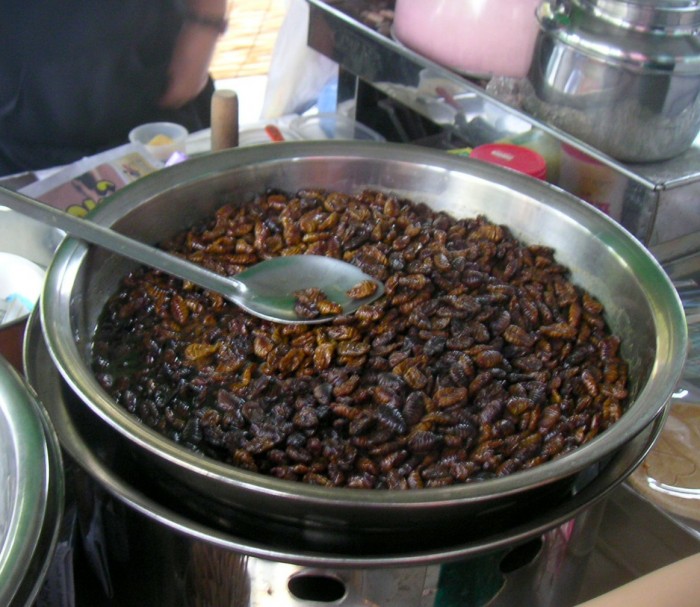
Beondegi (번데기): Silkworm Larvae
What better place to start our journey than with some little critters. The good news is these critters are dead; the bad news is that they are bugs—and they look like bugs.
Beondegi are silkworm larvae which are steamed or boiled, seasoned, and served hot and in the juices that are formed in the steaming process. It’s a popular street food, and it’s often served in a cup and eaten with a toothpick. You may also find boendegi as part of your assortment of banchan, or side dishes served with your food in a restaurant. They’re also commonly served with alcohol, which is good because you may need some the first time you try them.
Don’t be too worried, though. The taste is rather mild.
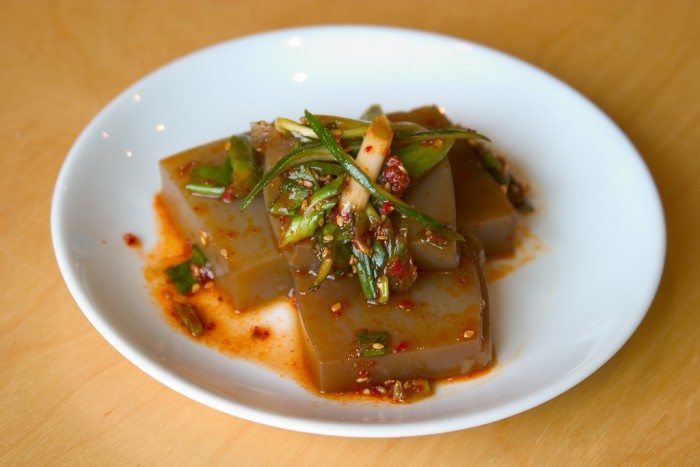
Dotorimuk (도토리묵): Acorn Jelly
Acorns are poisonous, but being an adventurous, throw-caution-to-the-wind kind of people, the Koreans eat them anyway (cooking removes the toxins).
This dish originated in the mountains of Korea, where oak trees, and thus acorns, are plentiful. Acorns are cooked, then powdered and made into a jelly. Dotorimuk is served as a side dish, where it’s seasoned and mixed with other ingredients such as soy sauce, garlic, sesame seeds, slivered carrots and scallions, and more.
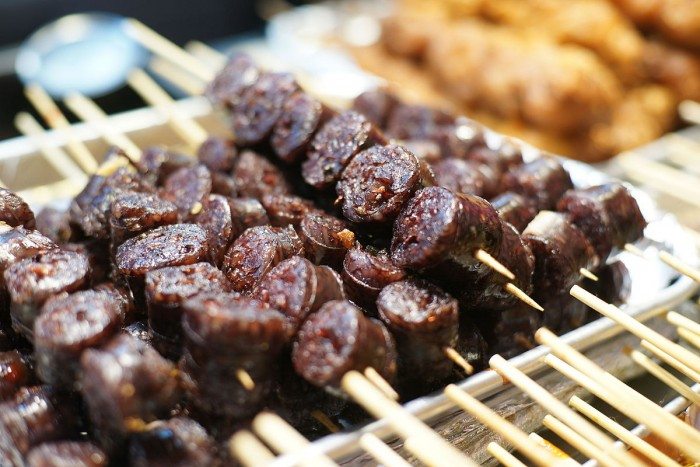
Sundae (순대): Boiled Intestine Sausage
Pronounced “soon-day,” this dish is far different from the sweet little ice cream sundae you may be picturing.
Sundae is a type of blood sausage; specifically, it’s boiled or steamed cow’s or pig’s intestines stuffed with various ingredients like glutinous rice, cow’s or pig’s blood, squid, cellophane noodles, barley, scallions, and garlic. It’s often eaten with tteokbokki sauce. Sundae is a popular street food in Korea, and, in fact, if you’re a fan of sundae there’s a neighborhood called Sundae Town in Sillim-dong, Seoul where there are many restaurants specializing in sundae. Vegetarians might want to find another hangout spot.
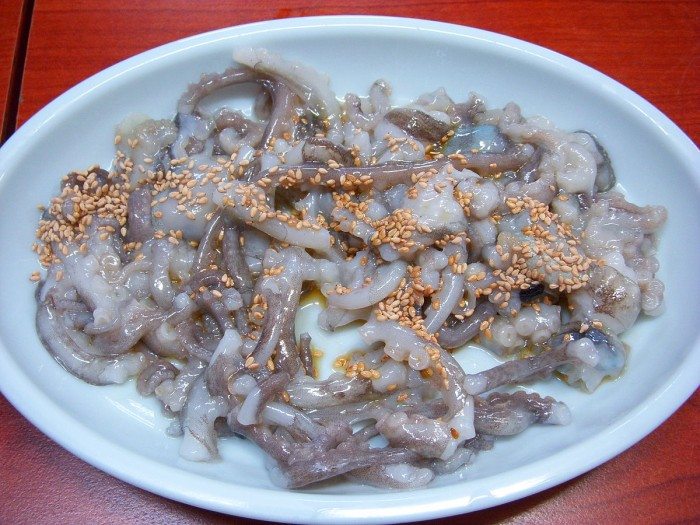
Sannakji (산낙지): Live Octopus
Okay, readers. It’s time to get real. Or, live, rather.
Sannakji is a dish made with nakji, a small octopus. These little guys are gutted and cut up while still alive, lightly seasoned with sesame seeds and sesame oil, then served immediately—the pieces squirming around on your plate. It’s important to note that the suction cups on the tentacles are still active and can stick to your mouth or throat. There are occasional deaths from choking on sannakji. Take special care when eating this dish, especially if you’re drinking at the same time. The nakji could have the last laugh.
If eating a living creature via convenient bite-sized pieces bores you, you can step it up and eat a live whole baby octopus. Not so fun for the octopus.
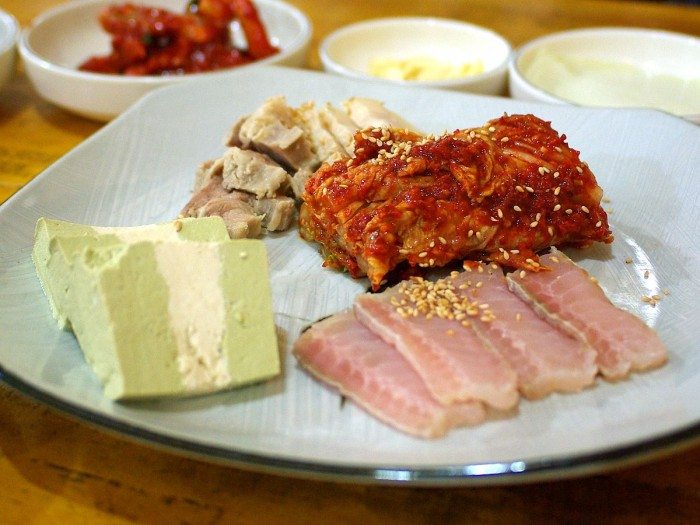
Hongoe (홍어): Fermented Skate
You might want to keep one hand free to plug your nose while eating this next dish.
Hongoe is a fermented fish dish from the Jeolla province. It’s known for having an extremely pungent, ammonia-like odor—so much so that it’s difficult to find restaurants that serve the dish. However, if you can get past the odor, it’s said to be delicious.
Hongoe is generally served in small slabs like sashimi and often eaten with bossam, a boiled pork dish, and kimchi. Wash it down with some makgeolli, a Korean rice wine.
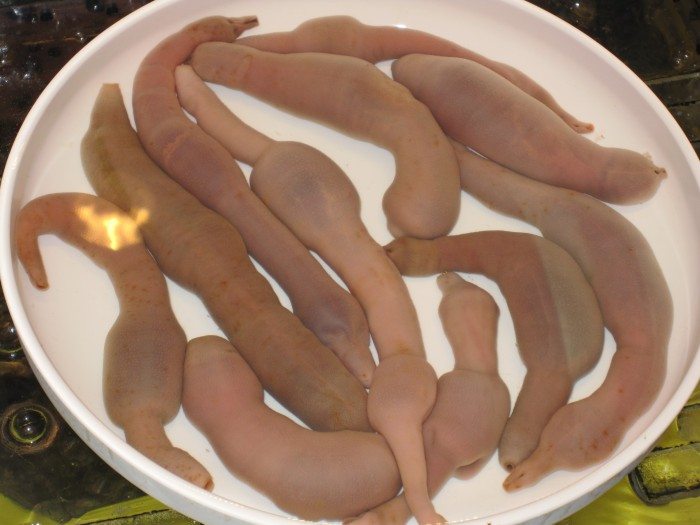
Gaebul (개불): Live Spoon Worms (Penis Fish)
Fear not, adventurous eaters. Octopus is not the only marine creature you can eat live in Korea.
Gaebul is a species of marine spoon worm. It’s frequently referred to as “penis fish,” and fro. Not surprisingly, gaebul is consumed as an aphrodisiac. This delicacy is eaten raw with salt and sesame oil, and apparently it’s not unusual for saltwater to spray out of it when you take a bite. If that’s not exciting enough for you, remember that gaebul is eaten live, and as such it wriggles a bit on the plate.
If you want to eat something live but don’t want the risk of your food fighting back (like those warrior octopi) then gaebul may be the dish for you!
Note: We don't endorse torturing animals, we're just highlighting the bizarre food some people eat in South Korea.

